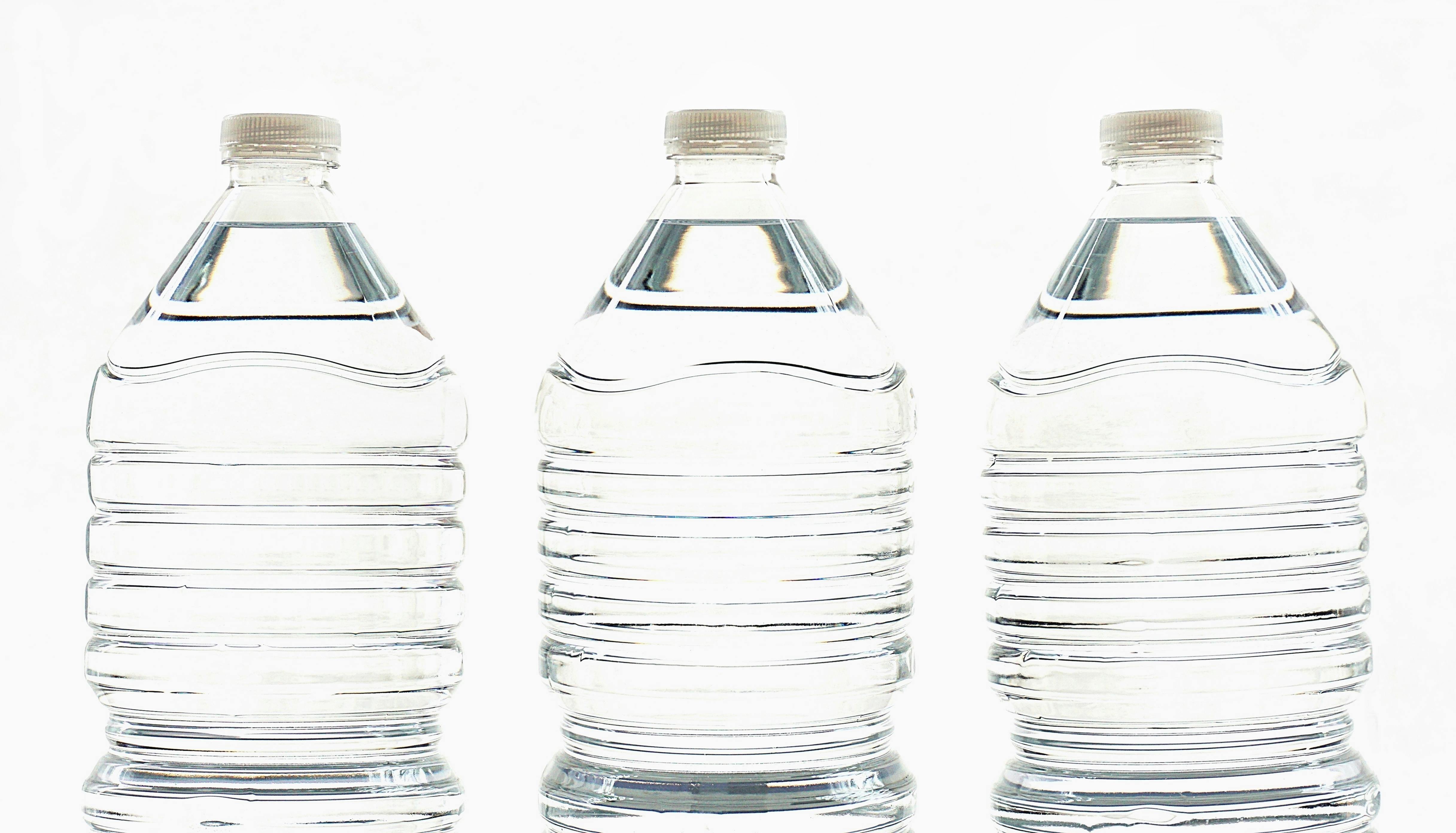Having a water softener in your home provides you with the luxury of soft water on demand. However, it is important to understand why your water softener might become full of water. Knowing the reasons behind this problem can help you take the necessary steps to prevent it from happening in the future. This article will provide an overview of why your water softener may be full of water and how you can address this issue.Your water softener tank is full of water because it is in the middle of its regeneration cycle. During this cycle, the water softener uses a brine solution to flush out the hard minerals that have been removed from your water supply. As this process occurs, the brine and hard mineral waste are flushed into the tank and the tank fills up with water. Once this cycle is complete, the used brine and hard mineral waste are then flushed out of the tank and your softened water is ready for use again.
Causes of a Water Softener Tank Being Full of Water
A water softener tank that is full of water can be caused by a variety of factors. The most common cause is improper operation or maintenance of the unit. If the unit has not been serviced regularly, it can become clogged or blocked with sediment or other contaminants. This will cause an increase in the amount of water in the tank and can lead to overflow.
Another possible cause is a faulty valve or other part within the unit. If a valve fails to close properly, it can cause too much water to enter the tank and eventually overflow. A broken or leaking pipe can also result in an overfilled tank, as well as inadequate backwashing cycles which allow for too much water to remain in the system.
In some cases, a water softener tank may be full of water due to incorrect sizing for the application. If the unit is not large enough for the home or business, it will not be able to handle all of the incoming softened water and will eventually overflow. It is important to select a size that fits your needs and ensure that it is regularly serviced and maintained properly.
It is also possible for a water softener tank to become full due to excessive usage or heavy demand within a short period of time. If too many people are using the system at once, it can become overloaded and cause an overflow situation. It is important to monitor usage carefully and adjust settings if necessary in order to prevent this from happening.
Finally, if there are any issues with the plumbing that connects to your unit, this could potentially lead to an overfilled tank as well. A clogged drain line or damaged pipe could be causing too much pressure on your system which would then lead to overflowing tanks and other problems with your system’s performance. It is important to inspect all plumbing connections regularly and make sure they are functioning properly in order for your system to operate correctly.
Reasons for an Overfilled Water Softener Tank
There could be several reasons why the water softener tank is overfilled. The most common cause is a malfunctioning brine tank float. The brine tank float is an arm with a float on the end that is attached to the inside of the brine tank. When the water level reaches a certain point, the float activates, signaling the brine tank to shut off and stop drawing more water into it. If this float becomes stuck or malfunctions, it will cause water to continue to be drawn into the tank and eventually cause it to overflow.
Another common cause of an overfilled water softener tank is a clogged brine line. The brine line is responsible for draining the used water from the softener back into the brine tank after regeneration. If this line becomes blocked by debris or sediment, it can prevent used water from draining out of the softener and cause it to become overfilled.
It is also possible for an overfilled water softener tank to occur due to incorrect settings on the control valve. If these settings are not properly adjusted, it can lead to excessive amounts of water being drawn into the softener during regeneration cycles, resulting in an overflow.
Finally, if there are any leaks in either of these components (the control valve or brine line), they can lead to an overfilled water softener tank as well. Leaks can allow additional amounts of water into either component and eventually lead to overflowing if left unchecked.
How to Diagnose a Filled Water Softener Tank
Diagnosing a filled water softener tank can be a tricky process. If you have recently noticed unusual water pressure or cloudy water coming from your taps, it is possible that the tank of your water softener has become full. To diagnose this issue, you need to determine why the tank is full and take the necessary steps to correct it.
The first step in diagnosing a filled water softener tank is to identify the cause of the issue. Common causes include an incorrect setting on the control valve, a broken pipe or hose, or an overfilled tank due to improper maintenance. Once you have identified the cause, you can take steps to correct it.
If the issue is caused by an incorrect setting on the control valve, you should inspect the valve and adjust it so that it is properly controlling the flow of water into the tank. If there is a broken pipe or hose, you will need to repair or replace it as soon as possible in order to prevent further damage. If the tank has been overfilled due to improper maintenance, you should empty out some of the excess water and adjust your maintenance routine accordingly.
Once you have identified and corrected any issues with your water softener’s settings or pipes/hoses, you should check for any leaks in order to ensure that no more water will enter your tank than necessary. You should also inspect your control valve regularly and make sure that it remains in good working condition so that your water softener continues functioning properly.
Finally, if all else fails and your water softener’s tank continues filling up despite all your efforts, it may be time for a professional inspection of your system. A professional can help diagnose any underlying issues with your system and provide advice on how best to proceed in order to keep your system running smoothly for years to come.
By following these steps, you can easily diagnose a filled water softener tank and take action accordingly in order to keep your system functioning optimally at all times.
Fixing a Water Softener That Is Full of Water
If your water softener is full of water, there are several steps you can take to fix the problem. First, you will want to check the brine tank for any sediment or debris that may be blocking the flow of water. If there is debris present, you will need to clean out the tank and ensure that all pipes and valves are free from blockages.
Next, you will want to check the settings on your water softener. If the settings have been adjusted incorrectly, this could be causing the issue. You should reset the settings according to the manufacturer’s instructions and then run a regeneration cycle to ensure that everything is working properly.
If these steps do not resolve the issue, you may need to replace some of the parts in your water softener. Common components that can become damaged or worn over time include filters, valves, and injectors. Replacing these parts can help restore your water softener’s performance and prevent future problems from occurring.
Finally, if all else fails, it may be time to contact a professional for assistance with fixing your water softener. A qualified technician can diagnose any underlying issues with your system and make any necessary repairs or replacements. This will help ensure that your water softener is functioning properly and providing clean, soft water for years to come.

Is It Normal for My Water Softener to Be Full of Water?
Yes, it is normal for a water softener to be full of water. This is because the water softener needs to be constantly filled with water in order to effectively soften the hard water. The water softener works by removing the minerals that make up hard water, such as calcium and magnesium, and replacing them with sodium ions. In order to do this, the softener must be full at all times with fresh, softened water. If the tank runs dry or is not filled to capacity, it will not be able to do its job effectively.
The amount of water that the tank needs depends on several factors, such as how much hard water is being used and how many people are in your household. If you are noticing that your tank is constantly running low or getting empty more quickly than usual, you may need to adjust the settings on your softener or install a larger tank.
What to Do If Your Water Softener Is Overfilled
Our water softeners are important appliances in our homes, especially if we get our water supply from a hard water source. But, if the water softener is overfilled it can lead to some serious problems. If this happens, it’s important to take the necessary steps to fix the issue and restore your appliance back to normal. Here’s what you need to do if your water softener is overfilled.
The first thing you should do is check for any leaks in the system. If there is a leak somewhere in the pipes or fittings, this can cause an overfill. Make sure that all pipes and fittings are secure and that any connections between them don’t have any gaps or cracks where water can escape from.
If you find that there are no leaks, then you need to check the settings on your softener. It could be that it has been set incorrectly and needs adjusting. Look at the manual for your model of softener and follow the instructions on how to adjust settings correctly.
It may also be necessary to check the salt levels in your system as well as how much water is going through it. This should help you determine whether or not there is too much salt being used or too much water passing through, which can cause an overfilling issue with your softener.
If none of these solutions work then it may be time to call out a professional plumber who will be able to diagnose and resolve the problem quickly and efficiently. They will be able to identify any underlying issues with your system that may be causing an overfill and advise you on what steps need to be taken in order to fix the problem.
By following these steps, you should be able to work out why your water softener is overfilled and rectify the issue quickly so that it doesn’t cause any further damage or disruption.
Troubleshooting a Full Water Softener Tank
If you are experiencing problems with your water softener tank, then it is important to troubleshoot the issue before attempting any repairs. In most cases, a full water softener tank is the cause of the problem. To properly troubleshoot a full water softener tank, take the following steps:
First, make sure that the regeneration cycle is set correctly. The regeneration cycle should be set according to how much water you use on a daily basis. If it is set too low, then the tank will fill up quickly and not be able to regenerate properly. To adjust the regeneration cycle, consult your user manual or contact a local water treatment specialist.
Next, check for any signs of blockage in the piping or valves leading to and from the tank. If there are blockages present, then they need to be cleared before continuing. To do this, turn off power to the unit and disconnect all hoses and valves leading to and from it. Once cleared, reconnect all hoses and valves and turn power back on.
Finally, check for any signs of corrosion in the tank itself. Corrosion can cause problems with mineral deposits forming on internal surfaces which can lead to clogs in pipes or valves. If corrosion is present in your tank, you may need to replace it with a new one.
These are some of the steps that should be taken when troubleshooting a full water softener tank. If none of these steps work or if you have further questions about your unit’s operation, contact a local water treatment specialist for assistance.

Conclusion
Water softeners are essential components of any home and are necessary to ensure clean, safe water for all uses. When a water softener is full of water, it can be caused by a few different issues, such as a faulty brine tank float valve or an improperly sized resin bed. To diagnose and fix the issue, it is best to contact a professional plumber who is familiar with the system. Regular maintenance and inspection of the system can help prevent future issues from occurring.
It is important to remember that water softeners need to be properly maintained and inspected regularly in order to ensure they remain functioning optimally. Understanding why your water softener is full of water can help you take the necessary steps to prevent costly repairs in the future.

